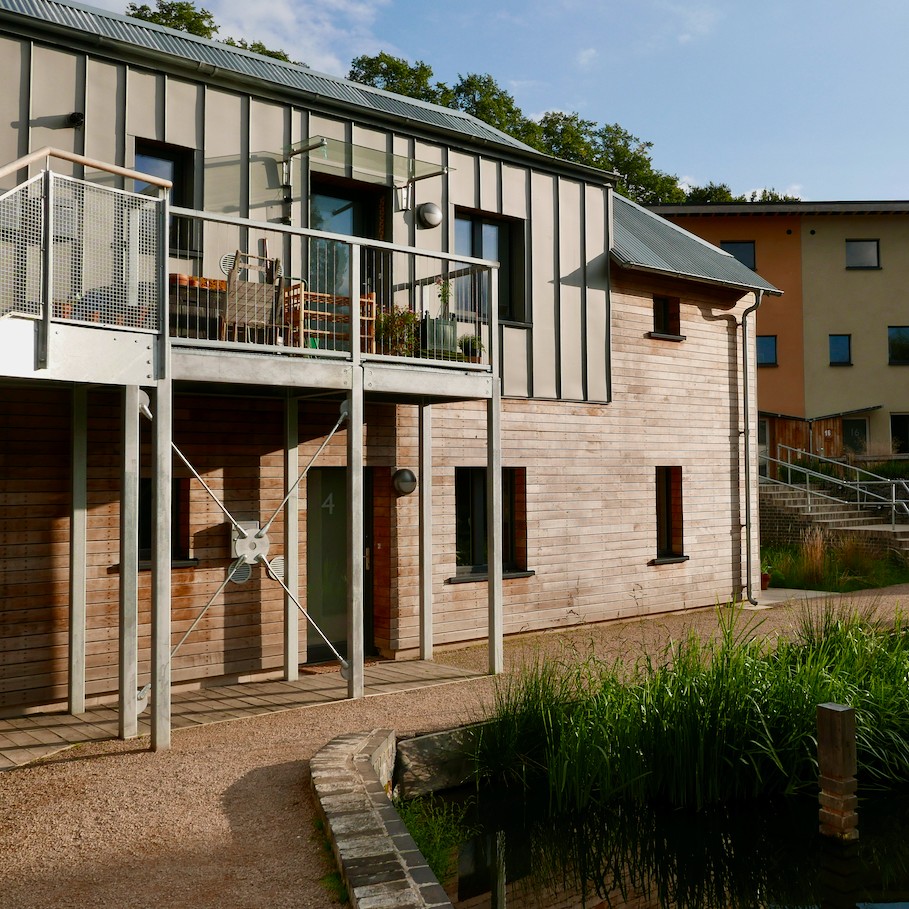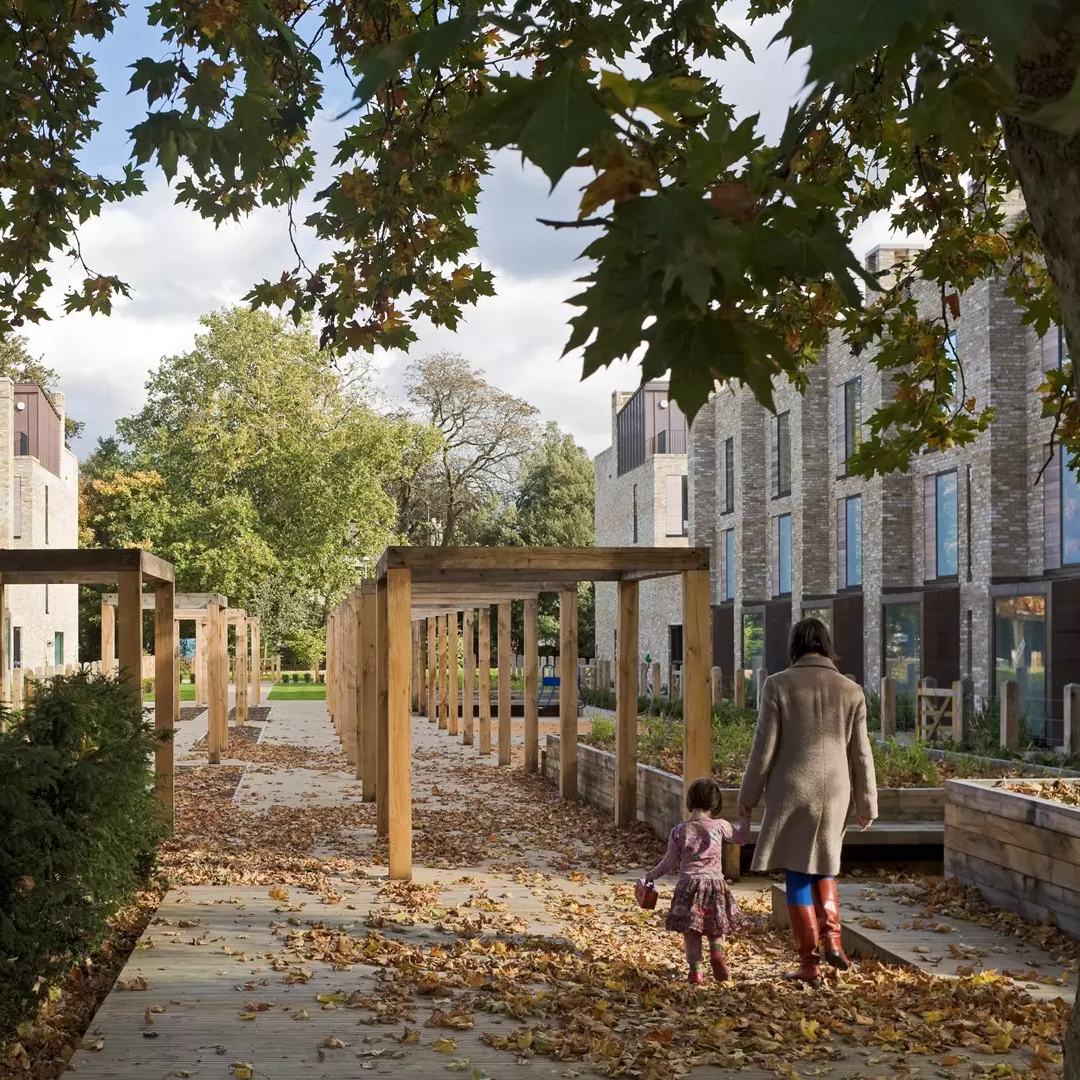Low-Carbon Affordable Housing Communities

These are designed to be affordable, but without relaxing planning laws that harm nature and wildlife. They use modern design to keep energy use and bills low.
Creating Cohousing: Building Sustainable Communities contains case studies of co-housing communities in Europe and North America. The authors also wrote Senior Cohousing Handbook.
You can find communities in England at CoHousing and MICO.

Accordia has set a benchmark for large-scale eco communities, building mews houses and apartment buildings on a former brownfield site, enveloped with a landscape of over 700 trees.
The terraced streets are surrounded by beautiful public gardens and walkable paths, with discreet cycle and car parking built-in. The estate is arrange over five compact ‘estates’ with everywhere else being green space.
All homes have floor-to-ceiling windows for natural light (good but important to avoid light pollution and not to display indoor foliage to face outdoors to prevent bird strike). External spaces within each home, preserve privacy for individuals.
BedZed is England’s first large eco-village community. With a friendly community and plenty of green space, these homes are not ‘cheap’, but also are not for millionaires only. This village in South London has become the gold standard for other schemes worldwide.
It mixes 100 homes with office space (so walkable), a college and community facilities. It produces very little waste, and most people have no need for a car. The bricks were from 20 miles away, and a huge amount of the building materials were recycled (many from waste generated while refurbishing Brighton railway station).
And this village was not made by destroying wildlife land. It was built on the site, where sludge used to be spread, from nearby sewage works!
The solar panels insulate the homes, and the wind cowls offer natural air conditioning. The biomass boiler runs on green energy, and all the appliances are energy-efficient and water-efficient, further reducing carbon emissions and bills.
The estate built one-bedroom apartments to four-bedroom townhouses – a mix of privately-owned homes, some on shared ownership, and others owned by housing associations for renting to people in low incomes.
Most homes (however small) have gardens, and there is a large shared green playing field. And the mostly car-free neighbourhood means the area is safe and happy to live in.
Three residents living in one property here (using the on-site car-sharing club instead of running a private vehicle) saves around £4 a day in bills, compared to the average London household.

Building for People (by a German eco-architect)
If you’re curious about real solutions that bring down emissions without sending costs through the roof, low-carbon affordable housing uses:
- Passive design cuts the need for pricey heating and cooling systems. These homes use airtight construction, thick insulation, and clever window placement. The result is a constant, pleasant indoor temperature all year round.
- Using recycled bricks, reclaimed timber, and low-carbon concrete keeps emissions down and cuts raw material costs. Sustainable materials like bamboo or cork work well for flooring and walls.
- Compact homes are often cheaper to buy or rent, making low-carbon living within reach for more people.






